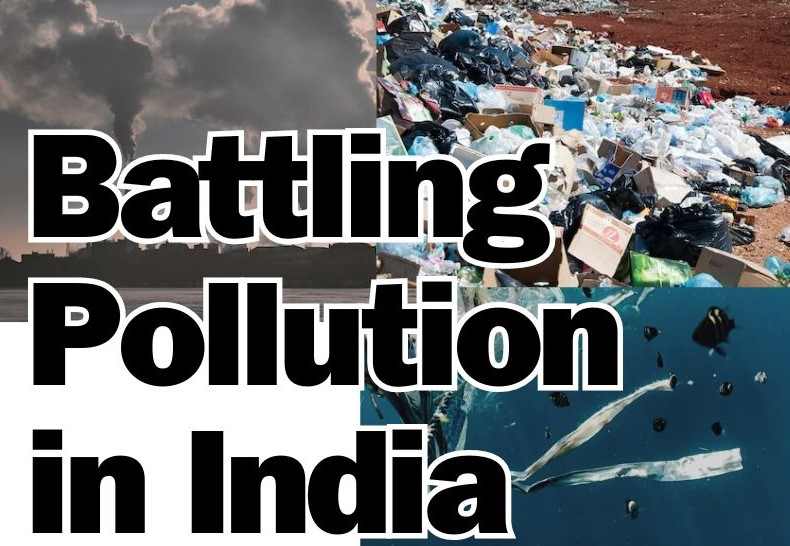Confronting Pollution Challenges in India: Battling Air, Water, and Land Contamination
India, a nation adorned with diverse landscapes, a rich cultural tapestry, and burgeoning economic prosperity, grapples with a formidable adversary—pollution. The triad of air, water, and land contamination emerges as a critical environmental concern, casting shadows on human well-being, ecological equilibrium, and the trajectory of sustainable development.

The Menace of Air Pollution
A noxious blend of harmful gases and particles blankets India’s urban centers and rural expanses. The malefactors? Vehicular emissions, industrial pursuits, and agricultural burnings contribute substantially to this hazardous concoction. The repercussions of air pollution extend to a myriad of health issues, from respiratory ailments to cardiovascular diseases and untimely mortality.
Confronting Water Adulteration
Water pollution, the insidious infiltration of harmful substances into water bodies, plagues India’s rivers, lakes, and groundwater reservoirs. The principal culprits—industrial discharges, untreated sewage, and agricultural runoff—fuel this contamination crisis. The fallout is severe, manifesting in waterborne diseases, ecological imbalances, and agricultural productivity setbacks.
The Weight of Land Contamination
Silently creeping into India’s fertile grounds, land contamination poses a latent threat. Inadequate waste disposal, industrial activities, and an overreliance on chemical agents in agriculture contribute significantly to this peril. The consequences unfold as compromised soil fertility, diminished crop yields, and health hazards for those in direct contact with contaminated soil.
A Holistic Strategy for Pollution Mitigation
Effectively combatting India’s pollution challenges necessitates a comprehensive strategy encompassing:
- Sustainable Urban Planning: Initiatives to alleviate traffic congestion, incentivize public transportation, and transition industries toward cleaner energy sources.
- Stringent Environmental Regulations: Fortifying environmental laws, establishing rigorous emission standards, and ensuring vigilant enforcement through robust monitoring mechanisms.
- Public Awareness Campaigns: Illuminating the health and environmental repercussions of pollution, urging individuals to adopt eco-friendly practices, and nurturing a culture of environmental stewardship.
- Investment in Pollution Control Technologies: Facilitating research and development of innovative pollution control technologies, advocating their integration in industries, and making them accessible to smaller enterprises.
- Advancement of Sustainable Agriculture: Promoting organic farming practices, reducing dependence on chemical inputs, and embracing sustainable irrigation methods.
- Elevated Waste Management Practices: Implementing streamlined waste collection and disposal systems, championing waste segregation at its source, and endorsing recycling and repurposing initiatives.
- Afforestation Initiatives: Expanding forest cover, rehabilitating degraded lands, and fostering green spaces in urban areas to enhance air quality and biodiversity.
A Collective Endeavor for a Purer Tomorrow
Confronting India’s pollution challenges demands a collaborative commitment from government bodies, industries, individuals, and communities alike. Embracing sustainability, adopting cleaner technologies, and instilling a sense of environmental responsibility can pave the way for a cleaner and healthier future for India.
